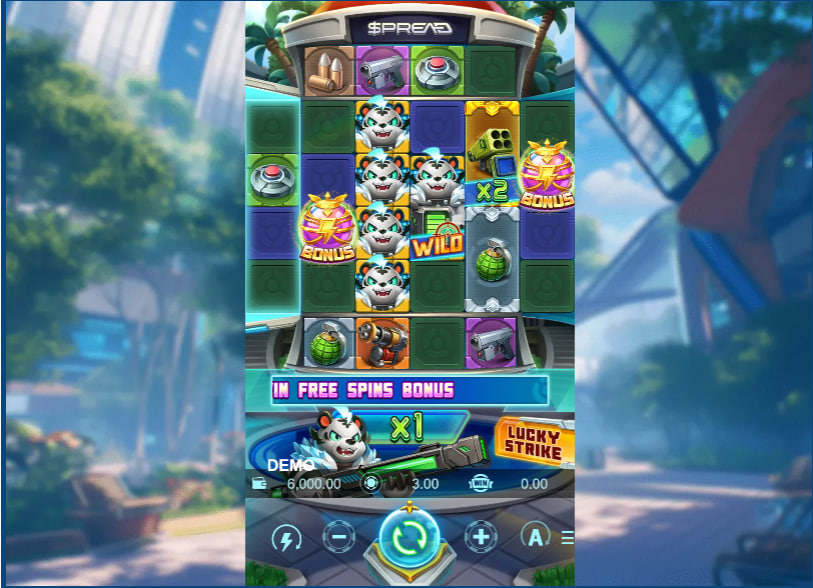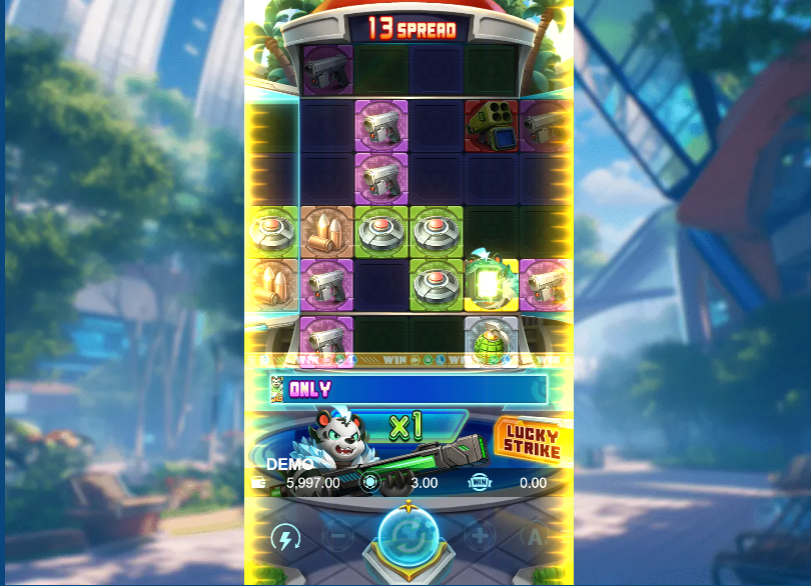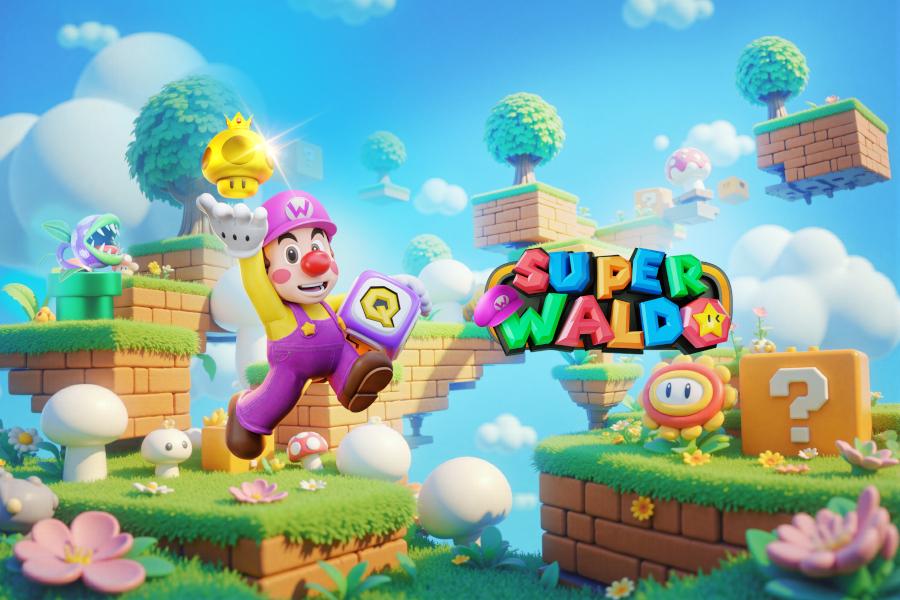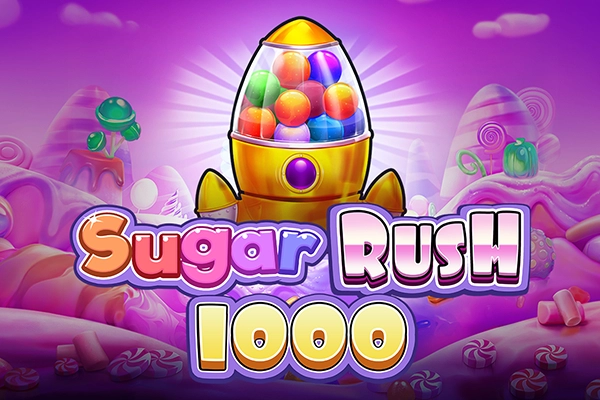PlayStar’s Go Clash operates on a 6-reel grid with a distinctive connection-based payout system. Set against the backdrop of a bright, futuristic city, the game presents a polished sci-fi combat theme with clean, animated visuals. It discards conventional paylines, instead forming wins through paths of matching symbols that chain together from the first reel. The core mechanic is a multi-stage symbol transformation, where silver-framed symbols involved in a win can upgrade to gold frames. These gold-framed symbols can then subsequently transform into Wilds, creating potential for prolonged cascades. This system is significantly enhanced during the Free Spins bonus, which introduces an accumulating win multiplier that does not reset. Activating the bonus round requires four or more Bonus symbols. Go Clash is constructed for players who value mechanical depth and the strategic potential of interlocking features.
PlayStar's Go Clash presents a notable deviation from the standard slot machine formula. At first glance, its futuristic, combat-themed presentation with an anthropomorphic tiger protagonist might seem familiar. However, the game's core architecture is built upon a foundation that discards conventional paylines and cluster-pays in favor of a much more intricate, path-based connection system. This design choice is not merely a cosmetic alteration; it fundamentally reshapes how winning combinations are formed and evaluated. The game's primary appeal is rooted in this system, combined with a multi-stage symbol transformation feature that can turn a single spin into a long and rewarding cascade of events.
The game is clearly engineered for players who appreciate mechanical depth and the strategic potential of interlocking features. It moves away from the instant gratification of simple line hits, instead offering a gameplay loop where the value is built through sequential reactions. For the experienced player seeking a new set of rules to master, or for anyone interested in the technical design of modern free slots, Go Clash provides a substantial and engaging subject for analysis.

A Multi-Layered Approach to Bonus Features
The most compelling aspects of Go Clash are found in its feature set, which operates as a series of connected events rather than isolated triggers. The central mechanism is a tiered symbol upgrade process, designated by Silver and Gold frames. This system is the engine that drives much of the game's dynamic action. During any spin, symbols on reels two through six that occupy two vertical positions may appear with a Silver Frame. These are the only symbols eligible for this initial stage. When a silver-framed symbol contributes to a winning combination, it does not immediately grant a special prize. Instead, its role is to set up the next event. After the win is paid and the cascade occurs, that position is filled by a randomly selected paying symbol (excluding Wilds and Bonus symbols) that now bears a Gold Frame.
The process then advances to the second stage. If this newly created gold-framed symbol contributes to a win in a subsequent cascade, its transformation completes. In the following cascade, it will be replaced by a Wild symbol. This multi-step process—from a regular large symbol to a silver-framed one, to a gold-framed one, and finally to a Wild—creates a chain reaction that can significantly alter the game board's composition over the course of a single spin. It rewards foresight and an understanding of how cascades can be chained together to escalate the potential of the grid. It's a deliberate, almost tactical progression that is far removed from the instant randomness of a simple Wild modifier.
This intricate frame system reaches its full potential within the Free Spins Bonus. Triggered by landing four, five, or six Bonus symbols, which award 10, 12, or 15 spins respectively, this round introduces a crucial enhancement: an accumulating multiplier. During the free spins, any win that includes a gold-framed symbol contributes its associated multiplier value to a central pot. Critically, this total multiplier does not reset between spins. It continues to build throughout the entire bonus round, applying to subsequent wins. The potential for this multiplier to grow to substantial levels is the main draw of the feature. Furthermore, the round can be extended by landing another set of four or more Bonus symbols, which adds five additional spins, up to a stated maximum of 200. This combination of symbol transformation leading to Wilds and a persistent, growing multiplier creates a highly volatile and compelling bonus environment.
Art Direction and Thematic Execution
Go Clash adopts a clean, high-tech aesthetic that feels more aligned with modern hero-based video games than with gritty, dystopian science fiction. The background depicts a bright, sunlit futuristic city with sleek architecture and lush greenery, creating an optimistic and energetic atmosphere. The art style is crisp and polished, with a cel-shaded quality that gives the symbols and the main character a distinct, animated look. The color palette is vibrant, using cool blues and greens for the background and interface, which allows the warmer, brighter colors of the paying symbols to stand out clearly on the grid.
The centerpiece of the visual design is the protagonist, a cybernetically enhanced white tiger who presides over the control panel at the bottom of the screen. This character is not a static element; it reacts to gameplay, brandishing a futuristic rifle that displays the current win multiplier. The animations are fluid and provide essential visual feedback. The explosion of winning symbols is satisfying and efficient, clearing the board for the next cascade without unnecessary delay. The transformations from silver to gold frames, and from gold frames to Wilds, are marked by distinct visual effects that make the state of the game board easy to read, even during a complex chain reaction. The vertical orientation of the game field itself is a clear indicator that the interface was designed with mobile play as a priority, ensuring an uncompromised experience on handheld devices.
Deconstructing the Core Gameplay Mechanics
The most unconventional element of Go Clash is its payout system. The game utilizes six reels, but wins are not calculated across predefined lines. Instead, it employs what can be described as an “Activated Reel” connection mechanic. The first reel is designated as the active reel. When a symbol lands on a position on this reel, it becomes the designated winning symbol for any potential combination starting from that point. A win is then formed by creating a contiguous path of matching symbols that are connected to that initial symbol, or to each other, either horizontally or vertically. A minimum of four connected symbols is required to form a payable win.
Symbol Hierarchy and Their Role in the Game
The symbols in Go Clash are thematically consistent, representing a futuristic arsenal. They are divided into clear tiers of value, which is communicated effectively through their design.
High-Value Symbols: Rocket Launcher, Minigun
Mid-Value Symbols: Grenade, Landmine
Low-Value Symbols: Pistol, Ammunition (bullets)
The paytable is structured logically, with the larger, more destructive armaments offering higher payouts. The Wild symbol, represented by the tiger protagonist, performs its standard function of substituting for all paying symbols to help form or extend winning connections. The Bonus symbol is the key to unlocking the free spins feature and does not have a payout value of its own.
A point of subtle strategic depth lies with the large symbols that can occupy two vertical spaces on reels two through six. While they contribute to wins like any other symbol, their primary mechanical purpose is to be the sole carriers of the initial Silver Frame. This makes them the gatekeepers to the entire symbol transformation process. A board state with several of these large symbols presents a higher latent potential for initiating a chain reaction than a board filled only with single-space symbols. They are not merely higher-value icons; they are the catalysts for the game's most interesting mechanics.

Go Clash is a product designed for a specific type of player. Its complex, interlocking systems will likely not appeal to those who prefer the straightforward nature of traditional three-reel machines. The game demands a degree of attention to fully appreciate how its mechanics—the connection payouts, the cascades, and the multi-stage frame transformations—work in concert. The real satisfaction in this game is not derived from a single large line hit, but from watching a carefully constructed chain reaction unfold across multiple cascades, turning a seemingly average spin into a significant event.
The mobile-first design is executed flawlessly, providing a smooth and intuitive experience for those who play on smartphones or tablets. The gameplay itself has a distinct rhythm; the base game can feel methodical as you wait for the frame system to activate, but the potential is always simmering beneath the surface. The game's energy and payout potential are heavily concentrated in the Free Spins round, where the non-resetting multiplier can create a dramatic escalation of returns. PlayStar has succeeded in crafting a slot that builds its identity around a coherent and layered system, offering a substantial and rewarding challenge for players who enjoy dissecting game mechanics and seeing how complex systems can interact to produce compelling outcomes.













